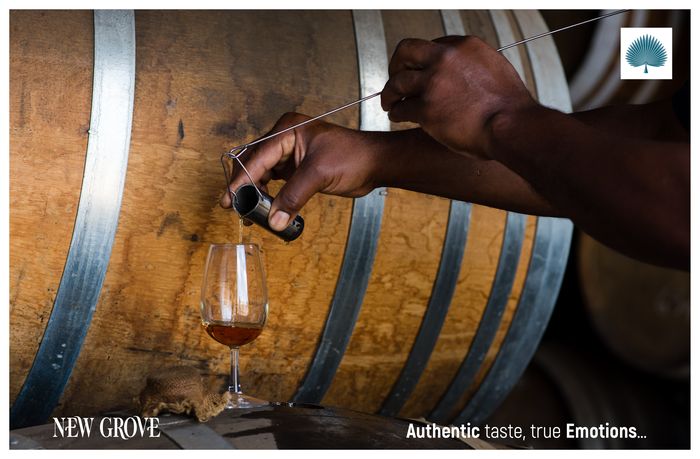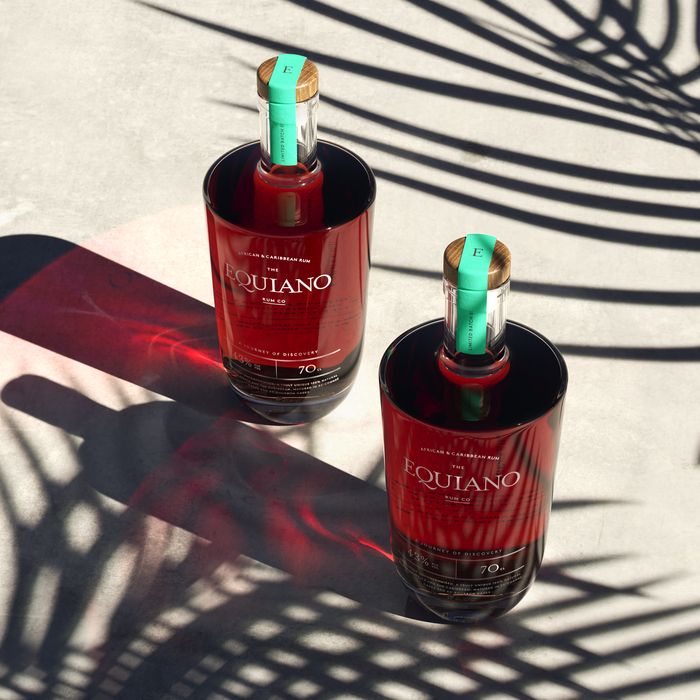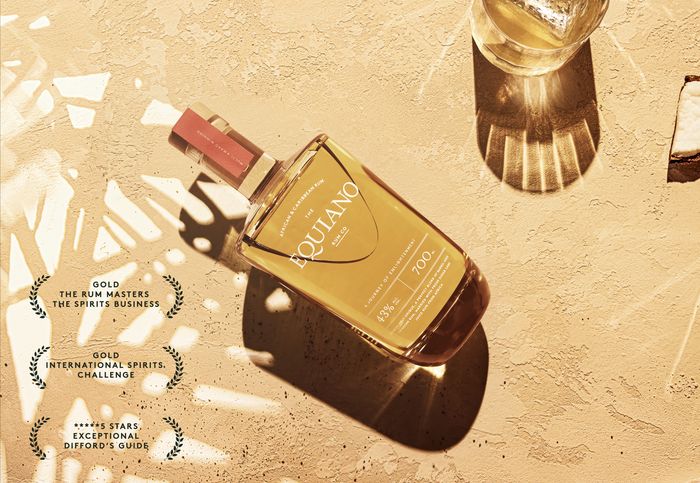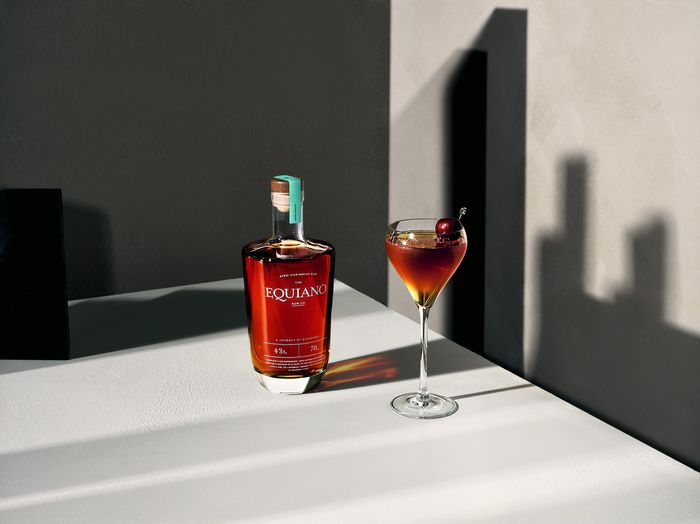
Welcome to our second part of an interview with Ian Burrell, global rum ambassador and co-creator of the first Afro-Caribbean rum: Equiano . After discussing the birth of the brand, let's now get into the more “geeky” details of the manufacturing process:
The Mauritian part of the blend (Gray's distillery) is 10 years old. Is it entirely column distilled?
Yes, these molasses rums are at least 10 years old (there are older rums in the blend) and were distilled in a single column. They were aged first in new French oak barrels, then in ex-cognac barrels. I learned very recently that these barrels come from Martell.
The Foursquare portion was aged in American oak barrels (I don't know which bourbon or Tennessee Whiskey distillery they came from though) for a minimum of 8 years. Annual evaporation in Barbados is 8%, and 6-10% in Mauritius. Both portions of the blend were aged in tropical climates.
For Foursquare, I imagine that it is as always a "single blended rum" (column/pot-still blend)?
Absolutely. The particularity of Richard's work is that he assembles these elements in different proportions, depending on the rum he is aiming for. Sometimes there is a majority of pot-still rum, sometimes more column rum. The other particularity is that this assembly is done before putting into casks. This is different from what Joy Spence does for example at Appleton, who ages the different distillates separately, to then assemble them.
Would you say that the Gray's part has the profile of a New Grove?
That’s a good question. I would say it’s slightly different, because the New Grove rums are a little more polished, more vibrant, more lively. The rum that might come closest to the one used for Equiano is the 2007 Single Barrel , a little rougher around the edges, but very fruity. That’s the rum I used in my blend, when I was creating Equiano in my kitchen!
The influence of French oak is most evident here. For the New Grove 5 and 8 year olds, they have to make larger quantities, so they use younger rums. The single barrels are a little more complex.
I would have thought that the Gray's part would be the lightest of the blend, but apparently I'm wrong...
It's interesting, because if you compare an Equiano to a Doorly's 12 or a Real McCoy for example, which are bottled at the same level (you can't compare with the Exceptional Casks from Foursquare, which are 46% and more), you can feel the personality that the Mauritian rum brings. It slightly modifies the Foursquare, while keeping its fruitiness, its creamy woody notes, its vanilla. So it's a combination of the two, which doesn't really have a defined style in my opinion. You can't say that it's a Barbados rum, or a Mauritius rum, it's somewhere in between. That's why it works well, and why it doesn't last long, because it's so easy to drink!
A major importer in England had a bottle and emailed me saying, “Ian, you said this was a session rum. Well, I originally wanted to save it for the weekend but I finished it all by myself!” It’s really quite easy to drink. That’s one of the reasons we chose to bottle it at 43%. We wanted it to be easy, but still have enough aromas and flavours to come through.
A cask strength lover will still be able to appreciate it, as it is a little lighter than what they usually drink, but it is still very tasty. For someone who is used to drinking rums at 37.5% or 40%, it will be a little stronger than usual, but it will be more premium.
How long are rums “married” during blending?
It is quite short, since it takes 2 to 4 weeks. It is done in stainless steel vats, simply so that the rum can rest. In the future we will make special blends, where the rest will be longer, and especially in barrels. We will use very old barrels, simply so that the rums harmonize and gain a little bit of wood. Some would use the term "finish", but Richard does not like this word which is rather inherited from whisky. He prefers to do real double maturations over 3, 4 or 5 years. In a tropical country, it is no longer a finish but a new maturation.
Are Mauritian rums already reduced before arriving at Foursquare, or do they arrive cask strength and are then reduced during blending?
Richard is the one who takes care of the reduction, with spring water from Barbados. They arrive at between 55 and 58%, he blends them with his rums and proceeds with the reduction.
Is he used to working with rums other than his own?
No, the only distillery he works with rums is Hampden, for Veritas . So he has Jamaican rum at home for that purpose, which is good because I would like to use some for a future Equiano. I would like to do a new Equiano blend, still Afro-Caribbean, with Hampden, Foursquare and Gray's or why not Chamarel or Oxenham. It's something I really want to do! I even spoke to Zan from Worthy Park (Alexander Kong – Export Sales Manager, editor's note) who asked me when his rums could be included in the Equiano blend. I told him that for that we could find a nice distillery in Ghana or Nigeria, to make a superb liquid with a Nigeria – Jamaica connection.
This is the principle of Equiano, we will never make rums from a single source, always blends where Africa and the Caribbean will be represented, with Barbados as a common point, because that is where rum was born and where Equiano arrived first.
Do you know any distilleries from mainland Africa?
Yes, there is a South African distillery called Mhoba , which I actually met in Mauritius at a trade fair. I like what they do, I like their ideas. When they came to the Rhum Fest in London, they met people and found a distribution contract, so that's great. It's also my job as a trade fair organiser, so I'm happy about that. Then they met Knud (Knud Strand, editor's note) who is now their distributor in France. I'm happy to have helped them to be more widely present. I would love to do something with them in the future, to integrate them into a blend.
A year and a half ago I went to Reunion Island, where there are very good rums. I have never been to Madagascar, and I have not been to the Seychelles for about fifteen years, but I would love to see what is happening there.
On the continent, there is a lot of cane that is grown, a lot of cane alcohols, but few people make a rum that could find an audience in the rest of the world. It is often local, a little raw, cheap. No one has yet wanted to invest in good French or American oak, while taking care of the distillation so as not to have sulfurous or rubbery notes.
It would take a little support to show them how to do it so that they can reproduce it themselves.
“I would love to do that one day, bring someone like Richard Seale or Maggie Campbell to a small distillery in Africa.”
I would like them to explain their way of doing things, in Barbados or in the United States , by advising them on distillation, on casks, in order to improve their production. After a few years, we could do something with them.
I know it can work. When I first went to Mauritius in 2008, Chamarel was just starting out, Labourdonnais were putting wood chips in their rums to give an aged or woody appearance, but it was like licking a plank of wood, it wasn't great. New Grove had good stuff, but they didn't know how to use it properly. They hadn't invested in quality casks. Saint Aubin were the best at the time in my opinion, they made the best pure juice rum I'd ever tasted. It came out of a little pot still, and it smelled of cane, sweet corn, butter, fruit, it was absolutely incredible.
Back in London, I had some Martinican friends taste it. They always said: "Martinique rum is the best in the world, Jamaican rum is crap, Barbados rum is the same. Guadeloupean rum... it's okay (laughs)"
I made them taste some Saint Aubin , first dry, then in a ti'punch. They said "wow it's good, a good 50%, it's perfect, it's Martinican, for sure" (laughs).
"When I showed them the bottle with Mauritius written on it, they said I had put Neisson in it (laughs)"
All these distilleries have evolved a lot since 2008, and now have stocks of very good rums. I was just on the phone yesterday with Chamarel, who now have 750 barrels of old rum. It's not much compared to Appleton's half a million, but it's considerable for a distillery that's only been around for 12 years. They have heart of the heat that's been waiting quietly in the barrel, column rum as well, and they also have blends. They really have very good rums, I really like their VSOP and XO.
It is a provenance that has only progressed since 2008, thanks to investments. They brought in French cellar masters, who taught them how to manage aging, how to choose good barrels. It would be a shame to make good rum and put it in bad barrels!
Christian Vergier for example is a legend, and having him really moved them in the right direction. That's what Trois Rivières did in Martinique a few years ago, and their already very good rums got even better. Now that they're with Campari, let's hope they grow even further.
I would like it to happen like this in Africa, in Nigeria, Ghana, or Rwanda, whose canes are among the best on the continent. These countries have very rich raw materials.
“Some would say that terroir doesn't really matter in rum, but it definitely does.”
It is found in the soil where the cane grows of course, but also when its juice is pressed, without going through the molasses stage, because it retains all of its environment. In addition, for me, the terroir is not only the place where the rum is made, but also the environment in which it ages. The people who make it are also important:
Joy Spence once said to me, “If I were sent to another country, I would make a Jamaican-style rum. It wouldn’t be Jamaican rum, but I learned everything in Jamaica for 40 years: blending, using different types of fermentation…” So people are a very important part of the DNA of a rum. There are many levels of terroir, not just the choice of yeast or water from a certain region.
This is a concept that I would like to develop in Africa, and it is also one of the reasons why I wanted to create this Afro-Caribbean rum. I would like to involve people from the Caribbean who have notoriety, know-how, experience, to give back to the place where they come from.
Can you tell us about the proportions of the Equiano blend?
Oooh that's a big secret... (laughs) It's like my grandmother's Jerk Chicken recipe! When I ask her about the ingredients and spices, she answers me "well a little bit of this, a little bit of that... you can't measure it, you can feel it..." (laughs).
I can only say that there are more Foursquares than Gray's, as far as Equiano Original is concerned. At the moment, Gray's is expensive for us, because it comes from so far away. So we only have small quantities available. But we try to plan ahead and put some rum aside.
Equiano has been around for 2 years now, and we are already available in 15 countries, it was so fast! We have just been registered with the LCBO in Canada, and LMDW has just listed us. If it works in France, which is one of the countries where rum is drunk the most in the world, then the potential is huge in Europe and the United States. We are already in Florida, Maryland, Washington DC, Virginia, Illinois with Chicago, not yet in New York, but America is starting to open up so we could grow quite quickly and quite strongly, even if today we are quite small.
How did you come to choose this degree of 43%?
It's a rum to drink! When I'm asked if it's a tasting rum or a cocktail rum, this is what I say. It's to drink as you want to drink it. Dry, it offers a lot of aromas, warmth. It has a nose that evolves in the glass, and it has enough power to be able to smell it for a long time. It's a degree that is not too high, so as not to scare off novices. Not everyone appreciates cask strength or navy strengths (57%). However, we also want to make sure that these amateurs can appreciate Equiano. It will surely be lighter than what they usually drink, but that way they will be able to drink more of it! (laughs)
When you taste a cask strength , you spend time smelling, drinking a few drops, and so on. These are often beautiful rums, but very strong, because they are over 56%. In these cases, in Jamaica, we talk about "nursing" the rum, which means sipping it slowly. But with Equiano, we want people to "doctor" the rum, that is to say, empty the bottle between friends without even realizing it! It's about drinking (more) responsibly (laughs)
In any case, when breeding and reduction are done well, we can have a good concentration even at 43%...
Absolutely, sometimes people even add a little water to their cask strength, that's not a problem. What we've done here is that we've already lowered the alcohol volume, but in a way that keeps a nice concentration. The only thing I would advise to do, or rather not to do, is to add water, apart from ice for a cocktail of course.
So indeed the concentration is there, besides I have in front of me an empty glass from the day before, from which still escape aromas of wood, vanilla, nutmeg, cinnamon… We notice that the rum can sometimes be a little cloudy when it is cold, because Richard has not carried out any filtration, in order to retain as many flavors as possible. But in this case do not worry, it disappears by shaking the bottle a good time.
Are the distilleries present for Equiano Light the same?
Absolutely, but this time with different ratios. The Foursquare is aged for at least 3 years, and the Gray's is a white rum made from pure cane juice. Gray's has only recently started working with pure juice, as they have always focused on molasses. They have a small gin still, with which Loïc has fun making pure juice in pot-stills (Loïc Lionnet, cellar master at Gray's, editor's note). For this version of Equiano, we are working with column rum (the same as for the Mauricia brand, editor's note), but it is not out of the question to work with pot-still rum in the future.
Richard Seale also happens to make some pure juice rum, with cane that he grows. In the future, there will be limited editions of Equiano, and we can imagine a 100% pure cane juice edition, a blend of pot-still rums from Mauritius and Foursquare. That would be great, and that's what we'd also like to do, small series of special expressions.
Can you tell us more about this pure cane juice rum from Gray's?
Typically at Gray's, fermentation lasts 36 hours, using baker's yeast. This is the same type of yeast as at Foursquare, where they create and propagate their own type of yeast from a strain of sugar cane. They then choose the one that produces the best alcohol based on the type of mash they want to make. This is important because if you have a bad yeast that dies quickly in the alcohol or heat, you ruin your batch. So the yeasts are adapted to the style of rum you are trying to produce.
All the cane comes from the farm around Gray's. Terra, the group to which the distillery belongs, owns several sugar cane growing areas. The harvest extends from June to December, as in Reunion Island for example. I once again had fun blending in my kitchen, with this unaged rum and a Doorly's 3 years old. When I found the balance interesting, I tried it in a Daïquiri, a Sour, and even a Mojito, because I believe that this Equiano Light will interest even more bartenders, whether they are professionals or amateurs.
You can also enjoy it as is, because you have fresh notes of sugar cane, but also sweeter, vanilla notes from the molasses rum. It's a good tool for a bartender. It's not our entry-level rum, it's just a different version.
This expression will be the lightest and youngest we bottle for now. We wanted to introduce Equiano Original first, to show who we are, and then talk a little more to our bartender friends with Equiano Light . In the near future, we will focus on older products.
Do you already have an idea of these future releases?
Absolutely, I can tell you that we are working on vintages. The principle will therefore be to assemble vintages that will be the same for Mauritius and for Barbados. The interest is to show a snapshot of cane and molasses that entered the barrel at the same time. We will have 2004, 2005, 2007… We will also make a cuvée that will include all the vintages, and which will be aged again in barrels. Once again, all this will take place in Barbados, and these will be very limited editions, rather around 50-51%. There is a reason for this 51%, and I will let the most “geeky” find it…
Thank you Ian for this long interview and for this infectious enthusiasm. We are already looking forward to the next Equiano!





